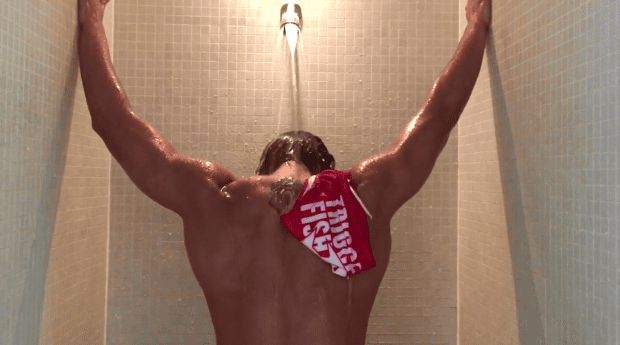From July 10 to 26, 2015, over 8,000 athletes descended upon Toronto for the Pan Am Games. Daily Xtra could only find a small number of them that openly identify as LGBT.
It’s not for lack of trying to create a comfortable environment. The 519, Toronto’s LGBT community centre, morphed into PrideHouseTO, an LGBT inclusive space for athletes, fans and community members.
Over the course of the Pan Am Games, PrideHouse played host to a number of LGBT-positive events, including a talk with Erin McLeod — who came fresh from her wedding to Houston Dash teammate Ella Masar — and Fallon Fox, a transgender mixed martial arts fighter.
But the athletic world is still mired in a strong heteronormative culture that many athletes, and coaches, can hardly escape.
Connor Taras, a silver medalist in sprint kayaking at the 2011 Pan Am Games and three-time world medallist, now works for Toronto 2015. He didn’t publicly come out until his final year of his kayaking career — not because it was a hostile environment, but because he was unsure how people would react. After every race, Taras admits he felt the pressure to play up his masculine side.
“You just don’t know,” Taras says of how teammates and friends would respond. Fortunately, they responded positively.
Other athletes were all too familiar with homophobic slurs. Daniel Girlando played national level water polo from ages 12 to 18. “Back in the ’90s, a typical thing you would hear from a couch would be, ‘don’t behave like faggots,’” Girlando says. Still in the closet at the time, Girlando would just block out the comments and ignore that part of himself.
He says he felt isolated and not comfortable enough to come out. “I would hope that now it would be a little different.”
That feeling of isolation pushes some LGBT athletes out of sports before they even get a chance to prove themselves. Charles Pavia played soccer as a young boy but quit in high school. “When I look back on it, I think it had to do with my uncomfortableness about myself and my own body and what I was inside, without even knowing what that was.”
He notes that at the time, people just didn’t talk about homosexuality. “We didn’t have Will and Grace,” he says. “We didn’t have any role models.”
There are many more role models for young LGBT people now, but change is happening slowly at the top echelons of sports. That’s why both Girlando and Pavia have found a home with the Toronto Triggerfish, an LGBT-inclusive water polo league.
Being part of a team that celebrates differences is exciting, says Pavia, who has now played with them for 10 years, primarily as goalie. He enjoys the thrill of playing competitively. “I started realizing I was good at being a goalie,” he says, noting it wasn’t till he played sports that he understood the rush from stopping a goal from being scored. It’s not a feeling everyone gets to experience.
PrideHouse Toronto also played host to an LGBT sport inclusion summit that took place over three days during the Pan Am Games. Participants from around the world helped develop a series of recommendations to encourage inclusivity, such as ensuring that discrimination is prohibited and that training in LGBT inclusion is provided for coaches.
The recommendations echo some of what McLeod said in her speech at the 519 on July 8, where she noted that her coach, John Herdman, started using inclusive language in the dressing room — for example, referring to the players’ significant others as girlfriends or boyfriends when appropriate, or using the gender-neutral term partners.
“I think the acknowledgement — instead of having to hide that you are in a relationship with whoever — I think that’s another part of it,” McLeod says.
Changes like those, however small they may seem, mean that the locker-room becomes a more comfortable place for players of all orientations and identities. If some of the recommendations take place, the next time the Pan Am Games roll around, we may have even more athletes to profile.


 Why you can trust Xtra
Why you can trust Xtra


